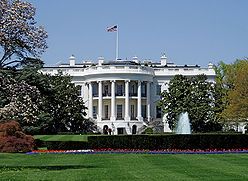“Punting the Pundits” is an Open Thread. It is a selection of editorials and opinions from around the news medium and the internet blogs. The intent is to provide a forum for your reactions and opinions, not just to the opinions presented, but to what ever you find important.
Thanks to ek hornbeck, click on the link and you can access all the past “Punting the Pundits”.
Follow us on Twitter @StarsHollowGzt
New York Times Editorial Board: The Big Lie Behind Voter ID Laws
Election Day is three weeks off, and Republican officials and legislators around the country are battling down to the wire to preserve strict and discriminatory new voting laws that could disenfranchise hundreds of thousands, if not millions, of Americans.
On Thursday, the Supreme Court – no friend to expansive voting rights – stepped in and blocked one of the worst laws, a Wisconsin statute requiring voters to show a photo ID to cast a ballot. A federal judge had struck it down in April, saying it would disproportionately prevent voting by poorer and minority citizens. Last month, however, the United States Court of Appeals for the Seventh Circuit allowed it to go into effect, even though thousands of absentee ballots had been sent out under the old rules. [..]
Similar laws have been aggressively pushed in many states by Republican lawmakers who say they are preventing voter fraud, promoting electoral “integrity” and increasing voter turnout. None of that is true. There is virtually no in-person voter fraud; the purpose of these laws is to suppress voting.
Paul Krugman: Revenge of the Unforgiven
How Righteousness Killed the World Economy
Stop me if you’ve heard this before: The world economy appears to be stumbling. For a while, things seemed to be looking up, and there was talk about green shoots of recovery. But now growth is stalling, and the specter of deflation looms.
If this story sounds familiar, it should; it has played out repeatedly since 2008. As in previous episodes, the worst news is coming from Europe, but this time there is also a clear slowdown in emerging markets – and there are even warning signs in the United States, despite pretty good job growth at the moment.
Why does this keep happening? After all, the events that brought on the Great Recession – the housing bust, the banking crisis – took place a long time ago. Why can’t we escape their legacy?
The proximate answer lies in a series of policy mistakes: Austerity when economies needed stimulus, paranoia about inflation when the real risk is deflation, and so on. But why do governments keep making these mistakes? In particular, why do they keep making the same mistakes, year after year?
The answer, I’d suggest, is an excess of virtue. Righteousness is killing the world economy.
Edward Snowden’s leaks are not isolated incidents – or, at least they won’t be when we look back on this era 10 years from now
Transparency is coming, whether the government likes it or not. The only question is whether they decide to bring it to the public before whistleblowers do it for them.
That’s the underlying message of Laura Poitras’ mesmerizing new documentary, Citizenfour about Edward Snowden and the National Security Agency that debuted at the New York Film Festival on Friday night. [..]
But what the government has failed to grasp is that Chelsea Manning and Snowden’s leaks are not isolated incidents – or, at least they won’t be when we look back on this era 10 years from now. There are 5 million people with security clearances in this country, and many of them are part of a new generation that is far more critical of the blanket secrecy permeating government agencies than the old guard.
It’s only now that we are finally starting to see the reverberations of Manning’s and Snowden’s whistleblowing. But one thing is for sure: there are many more potential whistleblowers out there, and if government officials do not move to make their actions more transparent of their own volition, then their employees may well do it for them.
Robert Kuttner: More Trade Agreements Won’t Fix Austerity
The U.S. economy is growing slowly and Europe’s hardly at all. The stock market lurch last week is a belated acknowledgement that our two economies share a common affliction, and Europe suffers more seriously. The affliction is austerity.
And yet the main remedy being promoted by the U.S. government and its European allies is a trade and investment deal known as T-TIP, which stands for the Trans-Atlantic Trade and Investment Partnership. According to the deal’s sponsors, T-TIP would help stimulate recovery by removing barriers to trade and promoting regulatory convergence and hence investment.
The proposed deal is not popular in the U.S. Congress, which has to approve negotiating authority. The administration, say well-placed sources, hopes to cram through the necessary approval during the lame duck session of Congress after the November 4 election. That still will not assure approval, because the deal is also increasingly unpopular in Europe.
There are several big things wrong with T-TIP.


 The flashy rail projects are the very HSR projects to build bullet trains serving urban areas with millions of people.
The flashy rail projects are the very HSR projects to build bullet trains serving urban areas with millions of people.
Recent Comments